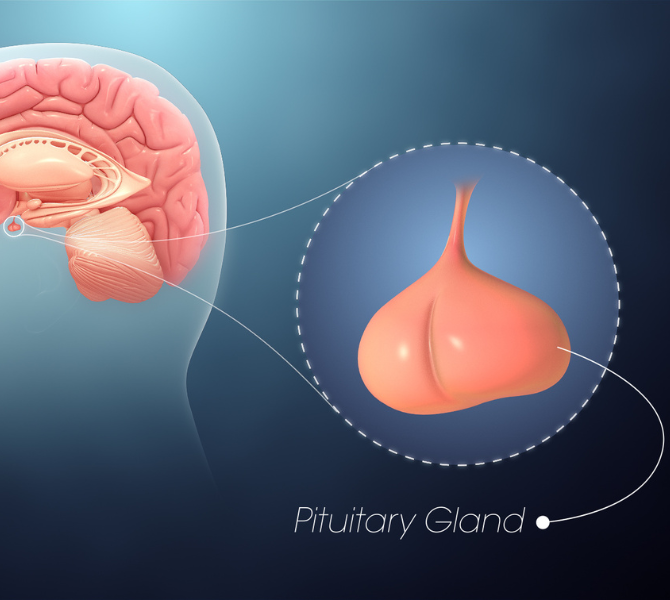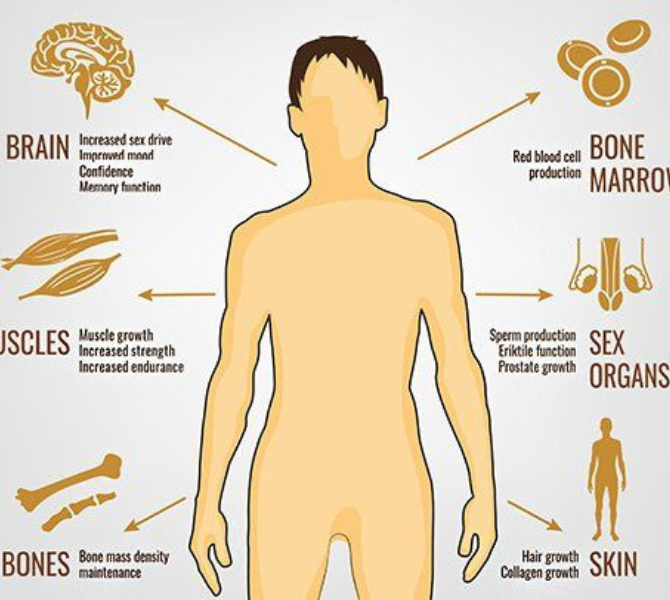

The pituitary gland, often referred to as the "master gland," is a small pea-sized gland located at the base of the brain. It plays a crucial role in regulating various bodily functions by producing and releasing hormones into the bloodstream.
One of the hormones produced by the pituitary gland is the human growth hormone (HGH), also known as somatotropin. HGH is responsible for stimulating growth and development in children and adolescents. It plays a vital role in influencing physical changes in the body, including height increase and muscle growth.
During childhood and adolescence, the pituitary gland releases HGH in pulsatile bursts, mainly during sleep. The presence of HGH in the bloodstream promotes the growth of bones, muscles, and tissues. It stimulates the division and multiplication of cells, which leads to overall growth and development.
In addition to promoting growth, HGH also plays a role in maintaining healthy muscles and bones throughout life. It helps regulate metabolism, promote fat metabolism, and support the repair and regeneration of cells and tissues. HGH is involved in various physiological processes beyond growth, such as regulating body composition, promoting protein synthesis, and supporting immune function.

Testosterone is a hormone primarily associated with male development and reproductive functions. It plays a vital role in the physical changes that occur during puberty and continues to influence various aspects of male physiology throughout life.
Genital Development: Testosterone stimulates the growth and development of the male genitals, including the penis, scrotum, and testes. It contributes to the enlargement of these structures, preparing them for reproductive functions.
Body Hair Growth: Testosterone promotes the growth of hair in specific areas of the body, such as the armpits, pubic region, face, chest, and legs. This hair growth is referred to as secondary sexual hair and is one of the distinguishing features of male puberty.
It's important to note that testosterone is present in both males and females, albeit in different quantities. While it is primarily associated with male physiology, females also have small amounts of testosterone produced by the ovaries. Testosterone contributes to female sexual health and plays a role in muscle strength and bone density.
The timing and pace of testosterone-driven changes during puberty can vary among individuals. It's normal for some individuals to experience these changes earlier or later than others. If you have any concerns or questions about the physical changes occurring during puberty or testosterone-related matters, it's recommended to consult with a healthcare professional who can provide accurate information and guidance based on your specific circumstances.

During puberty, both boys and girls experience the development of hair in various parts of the body, including the hands, legs, underarms, and pubic region. This increase in hair growth is a natural and normal part of sexual maturation. As hormonal changes occur during puberty, the androgen hormones, such as testosterone in boys and girls, play a crucial role in stimulating the growth of hair in different areas. The hair follicles become more sensitive to these hormones, resulting in the development of new hair. At the beginning of puberty, the hair that appears in these regions may be light, fine, and sparse. However, as puberty progresses, the hair becomes thicker, darker, and more abundant. This change is known as androgenic hair development. The timing and extent of hair growth can vary among individuals. Some may notice the growth of hair earlier or more rapidly than others. The pattern of hair growth is also influenced by genetics, ethnicity, and hormonal balance. If you have any concerns or questions about hair growth during puberty, or if you notice any unusual or excessive hair growth, it's advisable to consult with a healthcare professional who can provide guidance and address any concerns you may have.

The size of genitals, both male and female, is primarily determined by genetic factors and hormonal influences during development. While there are some surgical procedures and medical treatments available for altering the size of genitals, it's important to note that these options may have potential risks and complications. In the case of males, during puberty, the penis typically undergoes growth and development due to the increase in the production of testosterone. The size of the penis can vary among individuals, and it's important to remember that there is a wide range of what is considered normal. If you are concerned about the size of your genitals, I would recommend consulting with a healthcare professional, such as a urologist or a reproductive endocrinologist. They can provide you with personalized advice, guidance, and potentially discuss treatment options if necessary. It's important to have open and honest communication with a qualified medical professional to address your concerns appropriately.

Yes, you are correct. During puberty, boys typically experience a period of rapid growth in height known as a growth spurt. This is a natural and normal part of development that occurs as a result of hormonal changes in the body.
The growth spurt usually begins around the ages of 10 to 14, but it can vary from person to person. During this time, the body goes through significant changes, including the lengthening of bones and the development of secondary sexual characteristics.
If you have concerns or questions about your growth spurt or development during puberty, it's recommended to consult with a healthcare professional, such as a pediatrician or an endocrinologist. They can provide guidance and information specific to your individual circumstances.

Yes, you're correct. One of the signs of sexual maturity in boys is the ability to ejaculate, which is the release of semen through the penis. Ejaculation is a physiological process that typically occurs during sexual arousal and orgasm.
The timing of the first ejaculation can vary among individuals, but it commonly occurs during early to mid-puberty, typically between the ages of 12 to 16 years. It's important to note that the ability to ejaculate does not necessarily indicate sexual maturity in terms of emotional, psychological, or relationship readiness.
If you have further questions or concerns about sexual development or puberty, it's advisable to seek guidance from a trusted healthcare professional or sexual health expert who can provide accurate information and support.
